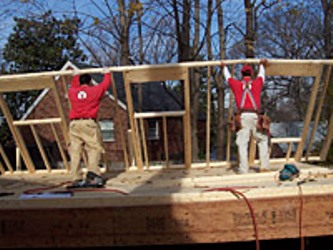With consumer confidence weak and getting weaker, and demand for housing showing no signs of resuscitation, home builders today are not only changing their building models, they’re changing their business models; that includes returning to a practice that brought many of the builders down in the first place.
During the heydays of the housing boom, builders put up as many homes as they could finance, with little regard to future demand because there were plenty of buyers milling about their model homes. They built on spec (speculative), assured that they could sell easily, and they could, until they couldn’t.
Over the past few years, spec building was close to non-existent, especially for small to mid-sized private builders. For one thing, they couldn’t get the financing for it, for another, they had no assurance that they could sell the properties in a timely, cost-efficient manner. But now the pendulum may be swinging back again, not due to demand, but due to the new consumer in today’s market.
“A lot of the buyers today are not comfortable contracting on a home and then going back and putting their house on the market,” says Bruno Pasquinelli, a private builder in Dallas, Texas. “They are afraid they can’t sell their home, so what they do is put their home on the market, wait until it’s under contract and then they go out and find a house that’s nearly ready for occupancy, so if you don’t have finished inventory on the ground, or close to being finished, you are going to lose a large segment of demand.”
Pasquinelli’s CBJENI Homes is focusing mostly on spec townhomes, as single family are more risky, but he’s gone from about 10-15 homes 2 and a half years ago to 70-80 homes today. He is dependent on private equity, as the banks are still too skittish, but his business is coming back steadily.
“It’s important which neighborhoods you build spec housing in,” Pasquinelli cautions. “It should be an ‘A location’ where you know there’s demand. I choose to do it where I’m not competing against publics.”
The publics continue to suffer, but their size and ability to move cash and cut costs, helps them weather downturns like this one.
“The one good thing about our business is you can control cash flow by how much land you buy, so we’ll adjust accordingly,” saidHovnanian CEO Ara Hovnanian on CNBC. “We know the market is concerned, but we’re comfortable, and we absolutely don’t think we will run out of cash at the end of 2012.”
Since 1998, roughly four million more homes were built than needed,” according to Paul Dales at Capital Economics. That means builders will have to try new strategies to stay in play. Spec is clearly one that targets skittish move-up buyers, like Bill Muros, who already has an existing home to sell.
“We don’t want to carry two houses. Our home is paid for, but we don’t want to own two houses, doesn’t make sense.”
By Diana Olick
Article derived from: cnbc.com
John is the Vice President here at JohnHart, and as such is responsible for managing and directing the firm towards obtaining its ultimate goals.
He is also one of our main contributors on the Blog. (please see his profile page on the main site for more information.)


